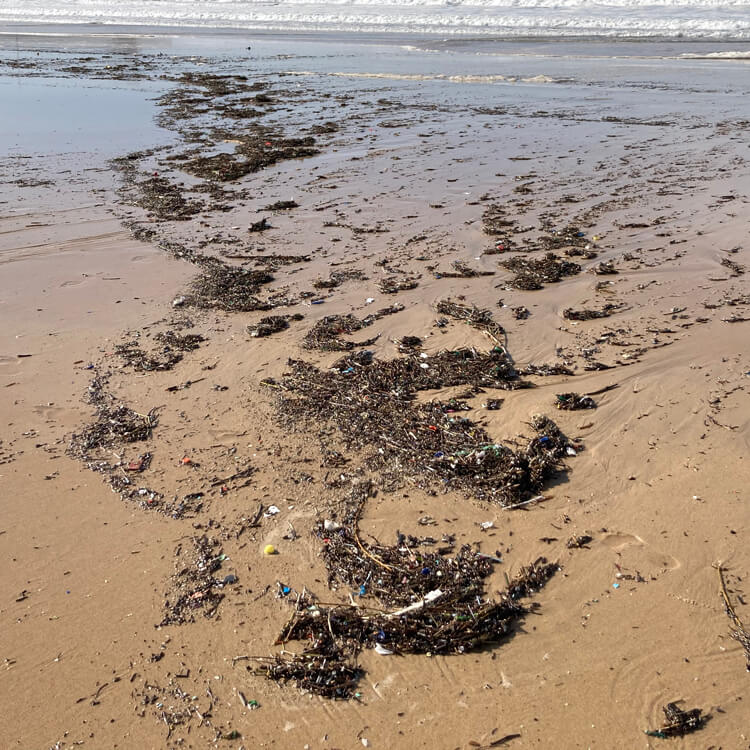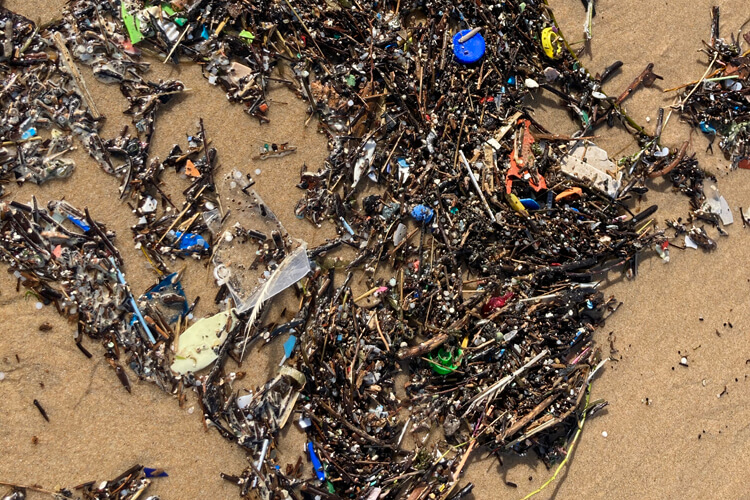Get ready for over five minutes of non-stop footage of a microplastic disaster somewhere on a Blue Flag beach in Europe.
It's just an example of the environmental tragedy taking place around the world in developed and underdeveloped countries.
Plastics and microplastics are taking over the shorelines at an alarming speed, a phenomenon accelerated by the Covid-19 pandemic.
The increase in the production of single-use disposable food and drink containers, take-away meals, masks, and online shopping has already had an impact on the environment.
The shocking video clip featuring a fraction of over two miles (3.2 kilometers) of broken plastic pieces and microplastics raises two questions.
When will we all put an end to single-use plastics? What more needs to happen before action is taken?
And when will governments and local authorities make an effort to keep their beaches clean all year round?
If this is what we can expect from a Blue Flag beach during wintertime, it's not hard to imagine the scenario on isolated beaches and coastlines.
The Blue Flag Concept
The Blue Flag is a worldwide movement and one of the most recognized eco-labels awarded to beaches.
The certificate issued by the Foundation for Environmental Education (FEE) is an indication of a beach's high environmental and quality standards.
The Blue Flag is currently being raised in over 4,500 beaches, marinas, and boat operators across 46 countries.
The truth is that plastics - and microplastics in particular - are not a variable or parameter that is involved in the assessment criteria.
As a result, a beach with dozens of microplastics per square meter can easily earn the right to display the Blue Flag.
Some of them are slightly buried under the sand; other microplastics are clearly visible and stand out for their shape and color.
In the "Blue Flag Beach Criteria" document, the word "plastic" is only referred to four times:
- The water must not be affected by "plastic articles";
- The waste disposal bins or litter bins recommended that bins made of "recycled composite plastics or wood";
- A Blue Flag beach must have facilities for the separation of recyclable waste materials, including plastic;
- Access to the beach must be facilitated by access ramps designed for users with various disabilities, ideally made of "recycled composite plastics";

Plastic Kingdom
The degradation of the world's beaches due to a global increase in plastic consumption is clear to everyone.
The amount of plastic that enters the ocean through the coastline has become a planetary threat to marine and, ultimately, human life.
Scientists have already confirmed the existence of tiny pieces of plastic inside the body of marine and freshwater species.
Some of them wash up ashore with their stomachs full of polymer-based items.
In under ten minutes, a person is able to collect a handful of small pieces of plastic and microplastics in an area of 30 square meters.
If this is a reality on a Blue Flag beach, what can we expect from hundreds of thousands of other public guarded and secluded beaches?
While it is true that most of us are comfortable with stepping over small pieces of plastic while entering the beach, those tiny colorful items represent a potential threat to toddlers, who can easily put them in their mouths in a second.
The Blue Flag is a great initiative and an important educational tool for future generations.
But the filter must be tightened to ensure that at least the best, safest, and cleanest beaches on our planet remain pristine areas for enjoying the pleasures of life by the sea.
Local authorities, regional environmental authorities, and seaside businesses already have several tools and mechanical devices for collecting microplastics from the sand.
There are options for all budgets, from the simplest rake with an attached net to sand-cleaning machines.
Beach raking should be a mandatory activity wherever a government cares for tourism and basic environmental practices.
With this ocean and beach pollution rate, grains of sand mixed with colorful toxic plastics will be the type of summer memories future generations will carry into adult life.
